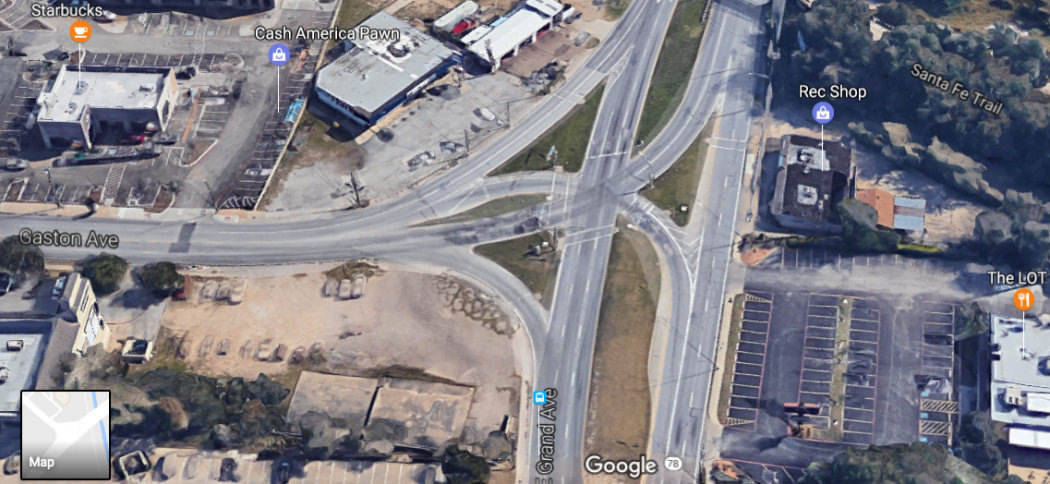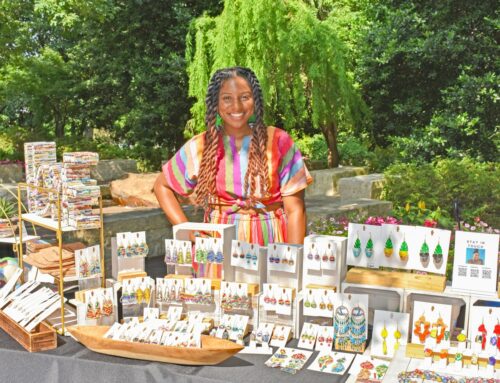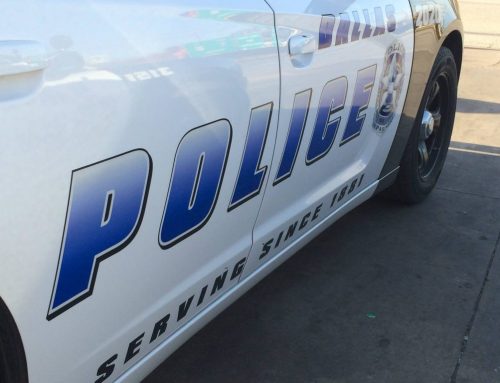
The Garland-Grand-Gaston intersection as it looks today. (Image via Google Maps)
The intersection at Garland, Gaston and Grand seems to draw the ire of neighborhood residents like few intersections can. There have been committees, schematics, plans and meetings in order to make the intersection safer and more efficient. The approaching bond election may move the neighborhood one step closer to a solution.
According to District 9 City Councilman Mark Clayton, the city hopes to provide $1 million in seed money from the November bond election to rework the intersection. The Texas Department of Transportation (TxDOT) says that the project will likely cost nearly $6 million. The state says the project is funded at $4.5 million on their end, but that they will work with the City of Dallas and other stakeholders to ensure full funding.
Michelle Raglon of TxDOT says several public hearings and input from various government entities will take place before the project moves forward. In January, the Reverse T came out on top as the favored design for the intersection, with pedestrian and cyclist connections to the Santa Fe Trail. This is still the plan, barring full-throated opposition from the public.
The intersection, which has city- and state-owned roads (Grand/Garland is also State Highway 78), has drawn attention from council members Adam Medrano, Philip Kingston and Clayton, whose districts border the intersection. State legislators Victoria Neave and Eric Johnson, and U.S. Rep. Eddie Bernice Johnson also have been involved, as well as the North Central Texas Council of Governments.
Raglon says that the addition of the Raising Cane’s on that corner will affect traffic flow, and that other small engineering tweaks remain, meaning the final cost is difficult to nail down. Funding for a project like this comes from many places, such as state air quality funds and congestion funds, in addition to TxDOT and City of Dallas money.
She notes the active neighborhood associations have taken ownership of the project and been lively in previous meetings, which TxDOT appreciates. “It is a very engaged community, with lots of questions and interactions,” Raglan says.
“This is a priority and a safety issue for that area,” she says. “If we could hurry it up, we would. But we cannot surpass all the steps to get it there.”
Stay informed about TxDOT’s local road projects, public hearings and other business at keepitmovingdallas.com.
SaveSave





